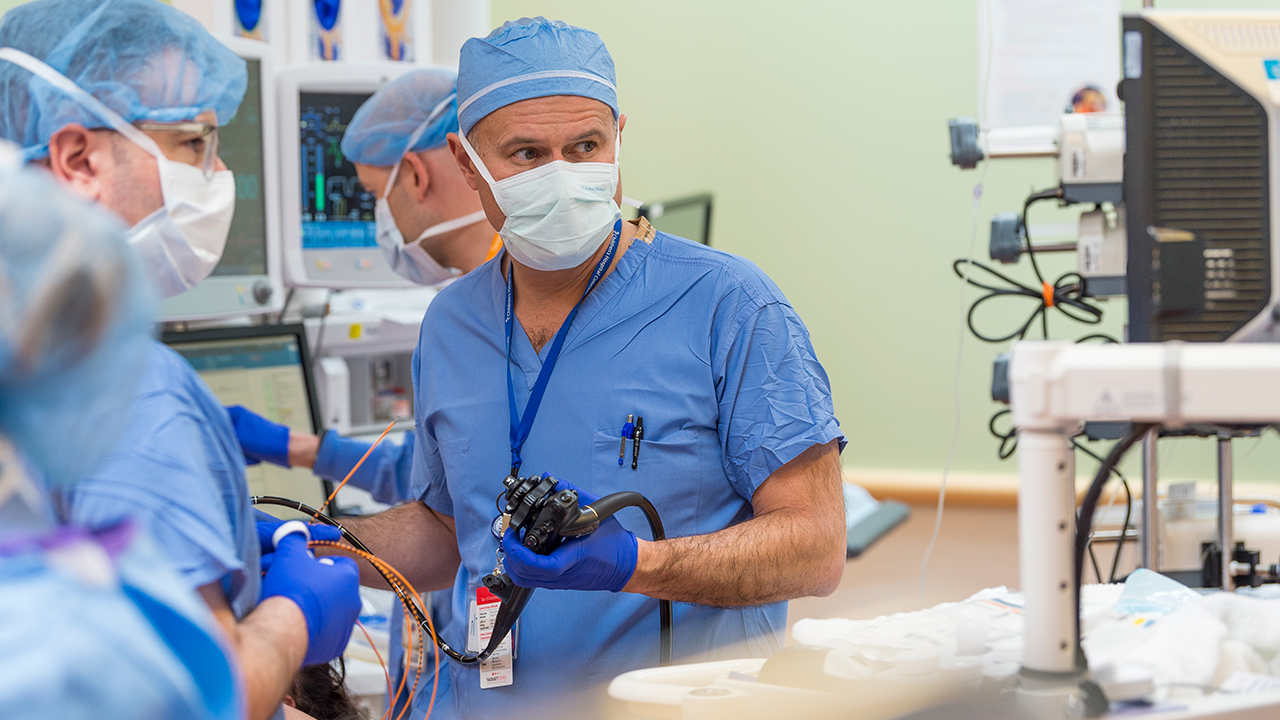Key takeaways
-
Our researchers studied the effectiveness of three of the most common bariatric procedures.
-
Our researchers studied differences in BMI one, three and five years after bariatric surgery.
-
Vertical sleeve gastrectomy and gastric bypass were found to be much more effective than adjustable gastric banding for treatment of severe obesity.
Research background: Which bariatric surgery is most effective for treating severe obesity in teens?
Between 8 and 9% of America's teens are severely obese. Multiple health complications are associated with severe obesity, which is defined as a body mass index (BMI) ≥35 kg/m2 or BMI ≥120% of the 95th percentile for age and sex.
Evidence shows that lifestyle interventions are ineffective for reversing severe obesity, and adolescents have limited weight loss medication options. Adolescent bariatric surgery case volumes are therefore on the rise as more teens seek weight loss surgery as an effective and available treatment option.
Studies have shown short- and long-term effectiveness for adolescents who undergo Roux-en-Y gastric bypass (RYGB) surgery for weight loss, but there are fewer studies on the effectiveness of sleeve gastrectomy (SG) and adjustable gastric banding (AGB) in adolescents.
Thomas Inge, MD, former Director of the Bariatric Surgery Center at Children's Hospital Colorado, was the lead author of the PCORnet Bariatric Study (PBS). The study, which included several other institutions around the country, sought to compare weight loss after RYGB, SG and AGB surgeries. It is largest study of adolescents undergoing bariatric surgery to date.
Research methods: Data came from the National Patient Centered Clinical Research Network
The study used the National Patient Centered Clinical Research Network (PCORnet) to aggregate and analyze data from electronic health records of patients 12 to 19 years old from 11 Clinical Data Research Networks, which represents up to 56 participating healthcare systems. There were 544 adolescents who met the eligibility criteria. The primary outcome of the study was to determine BMI measurements one, three and five years after surgery.
Research results: Patients who underwent RYGB and SG had the largest reduction in BMI during follow-up

Over the study period, the number of cases that met the inclusion criteria increased. Researchers observed a major change in the type of procedure surgeons performed during the study period. SG represented 13% of cases from 2005 to 2003 and increased to 83% of the cases from 2014 to 2015.

Most common comorbid health conditions
- 36% obstructive sleep apnea
- 35% dyslipidemia
- 32% hypertension
- 28% depression
- 25% gastroesophageal reflux disease
- 22% polycystic ovary syndrome
- 19% nonalcoholic fatty liver disease
- 16% type 2 diabetes

All adolescents studied had a comparable baseline BMI. Adolescents who underwent RYGB and SG had the largest reduction in BMI during each follow-up period (one, three and five years). Study authors used random effects linear regression to determine the percent change in BMI. Propensity score adjusted estimates and 95% confidence intervals were estimated for procedures with more than 25 patients each period.

For year five, there was insufficient data available to statistically compare, but findings suggested some stabilization for RYGB and SG patients.
Research discussion: More patients underwent SG, but RYGB resulted in a higher proportion of 30% BMI loss
Study authors found that while RYGB resulted in the greatest BMI loss at one year, both RYGB and SG resulted in generally comparable BMI loss (5% difference).
To date, this is the largest U.S. study to directly compare outcomes from the most common adolescent weight loss procedures. Since the dataset did not include detailed assessments of the comorbid conditions, this study was unable to assess if BMI change could improve or resolve comorbid conditions.
The data suggests SG is the leading bariatric procedure for adolescents in the U.S., but a larger proportion of patients who underwent RYGB experienced a weight loss of 30%. This implies RYGB could be superior for the most obese patients. Conversely, AGB surgical rates have continued to sharply decline in adolescents.
Research conclusion: AGB is a much less effective bariatric surgery
Adolescents undergoing SG and RYGB experienced greater reductions in BMI at one- and three-year follow-up time points, while AGB was found to be significantly less effective for BMI reduction.
Refer a patient
The Bariatric Surgery team at Children's Colorado treats obesity-related conditions via a multidisciplinary approach, including endocrinology, lifestyle medicine, psychology and nutrition. Call us at 720-777-5202 to refer a patient.
Featured Researchers
Thomas H. Inge, MD, PhD
Pediatric surgeon
Children's Hospital Colorado





 720-777-0123
720-777-0123










